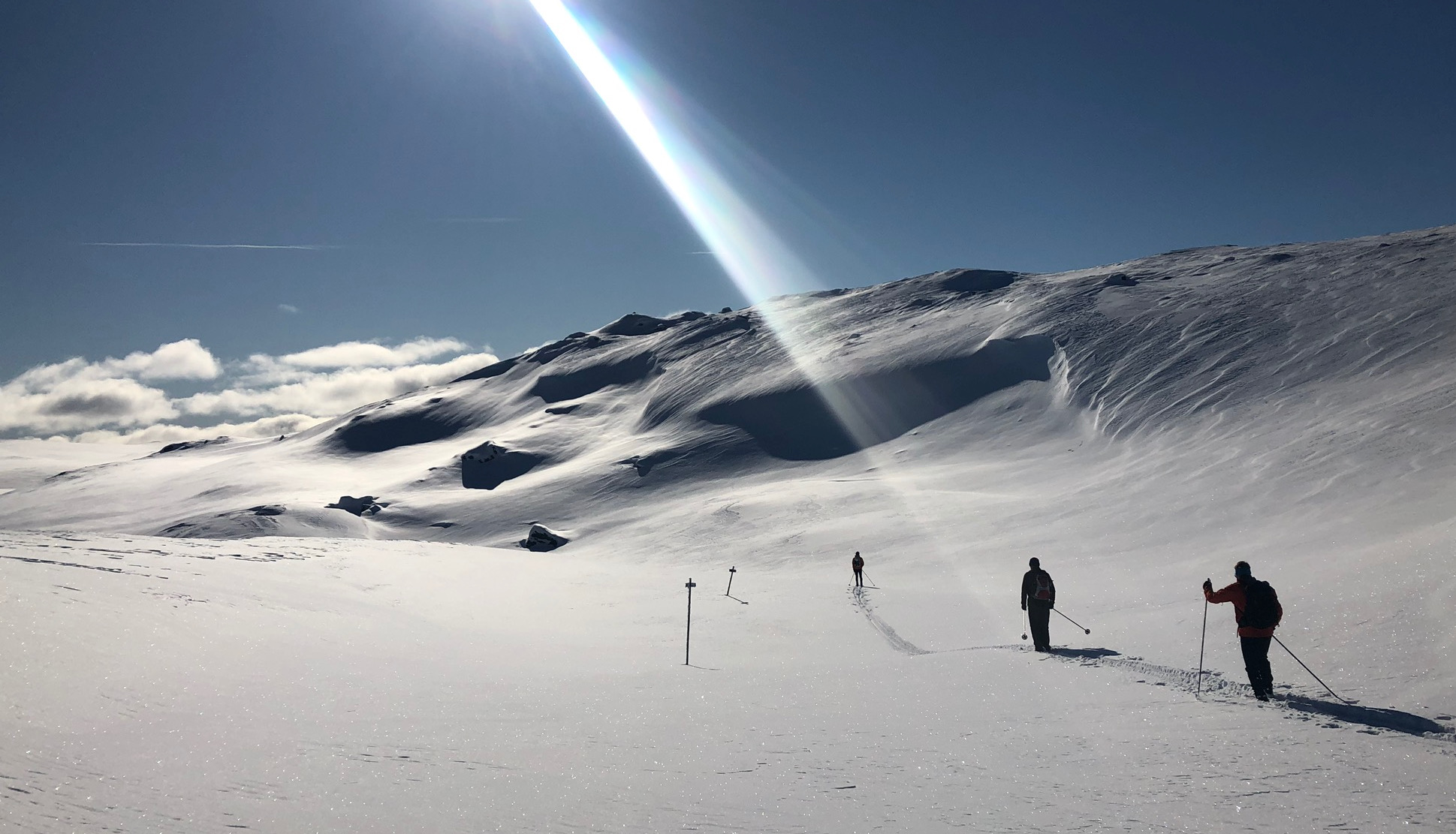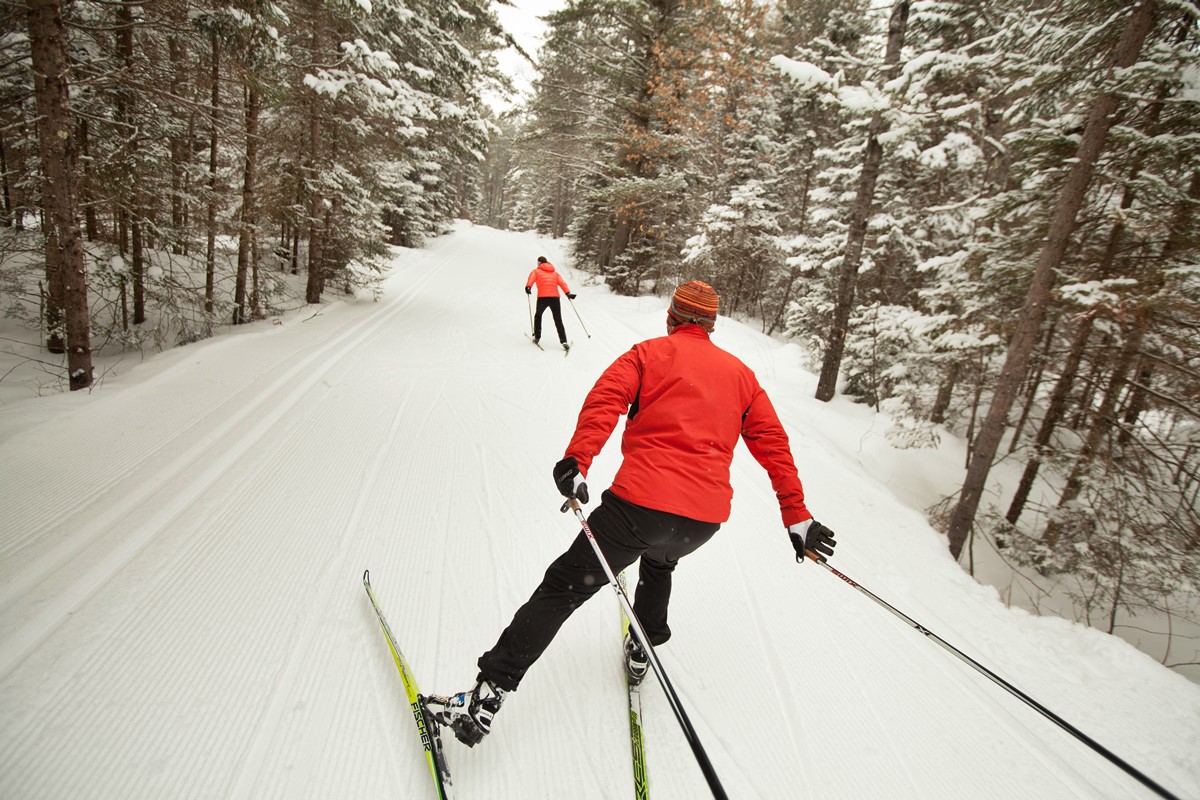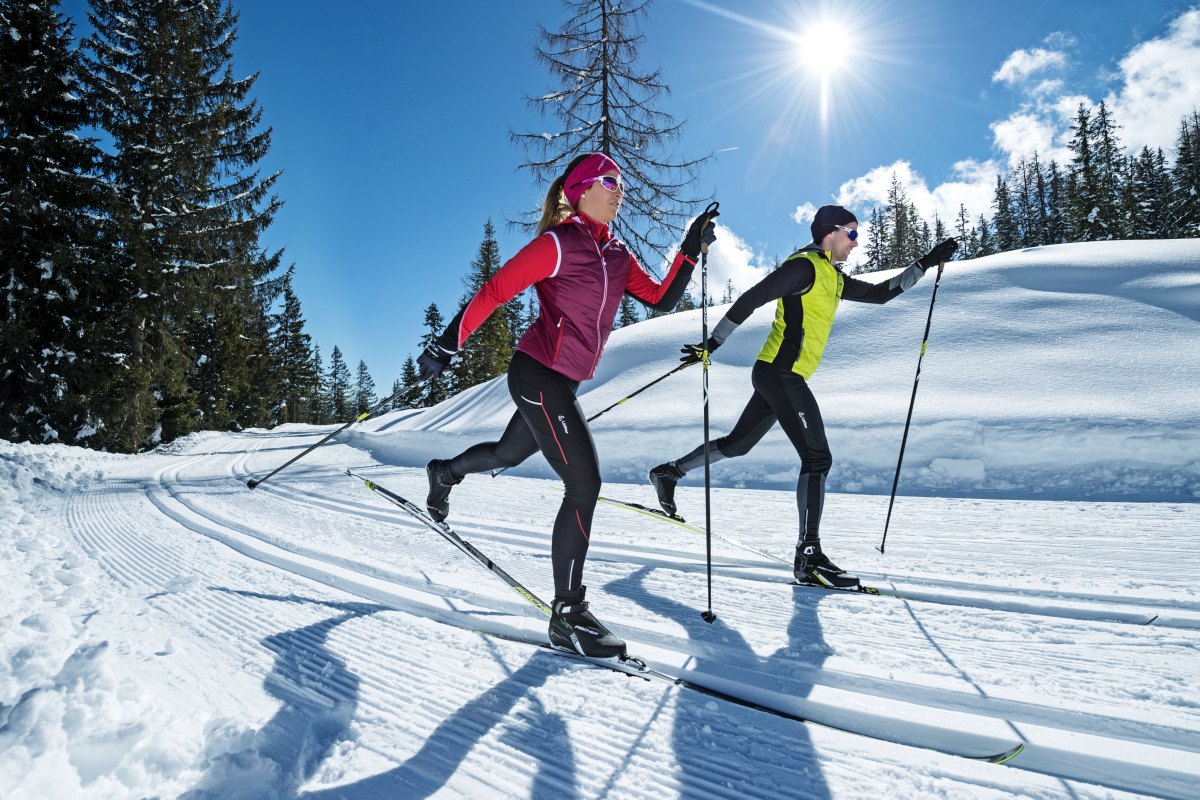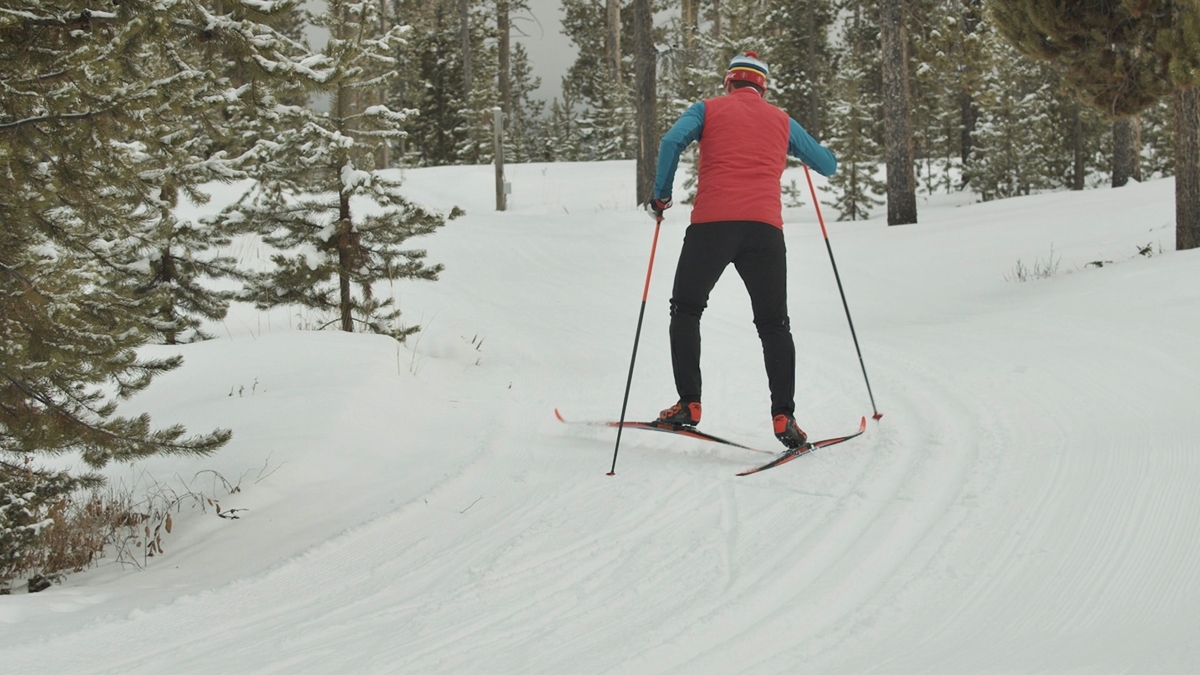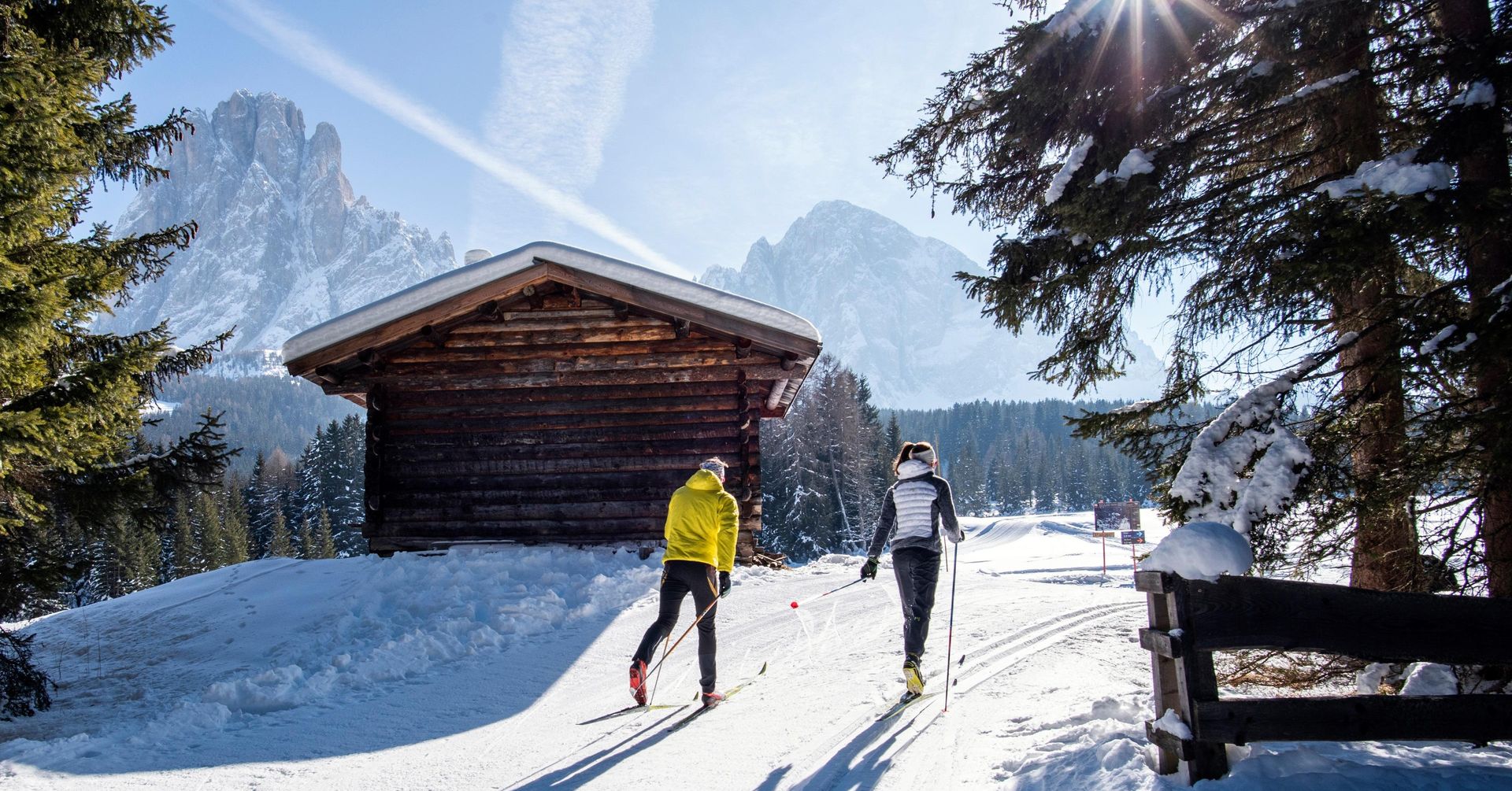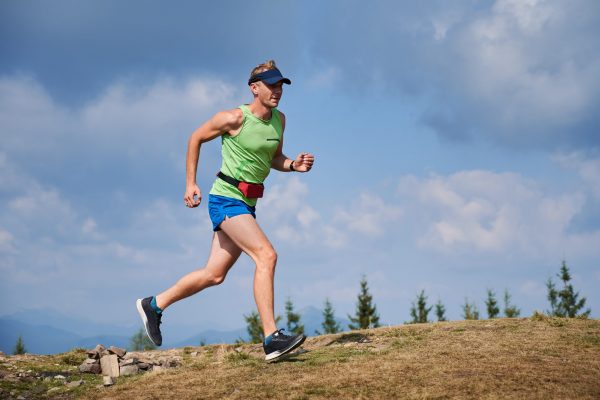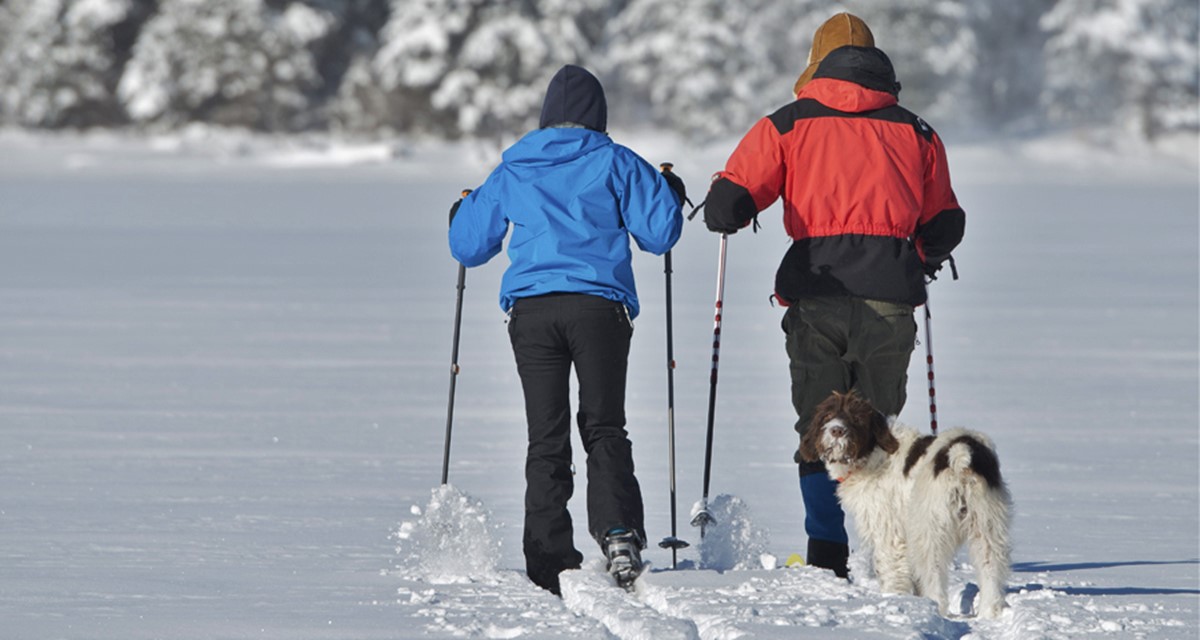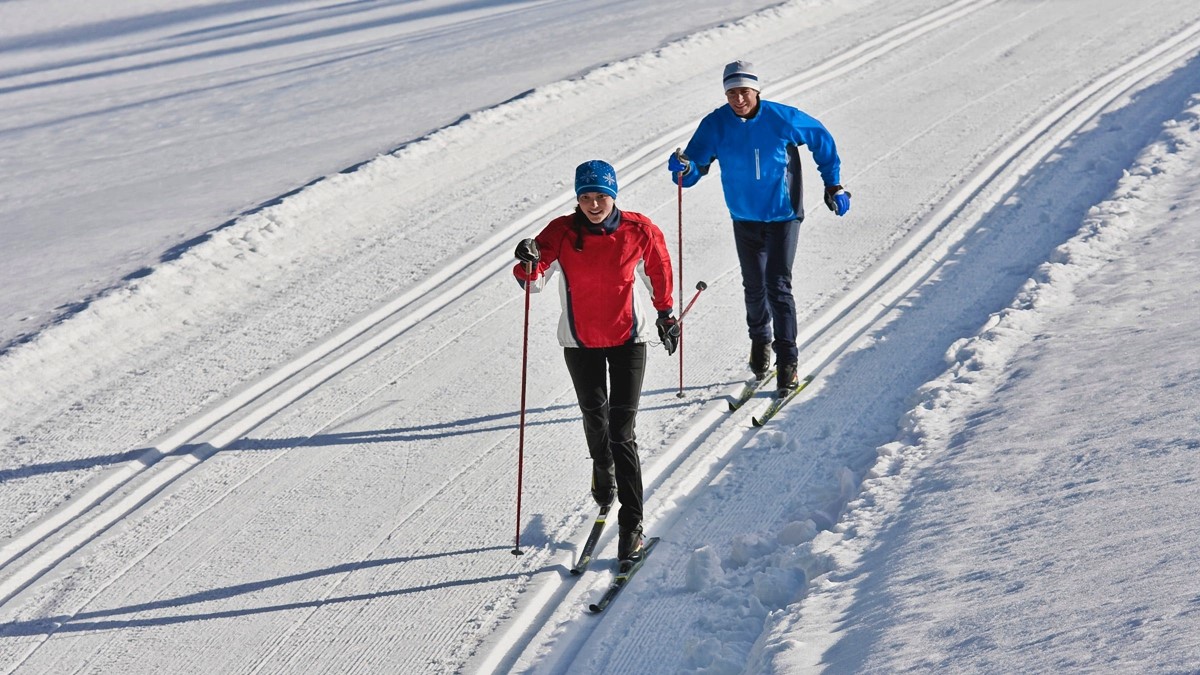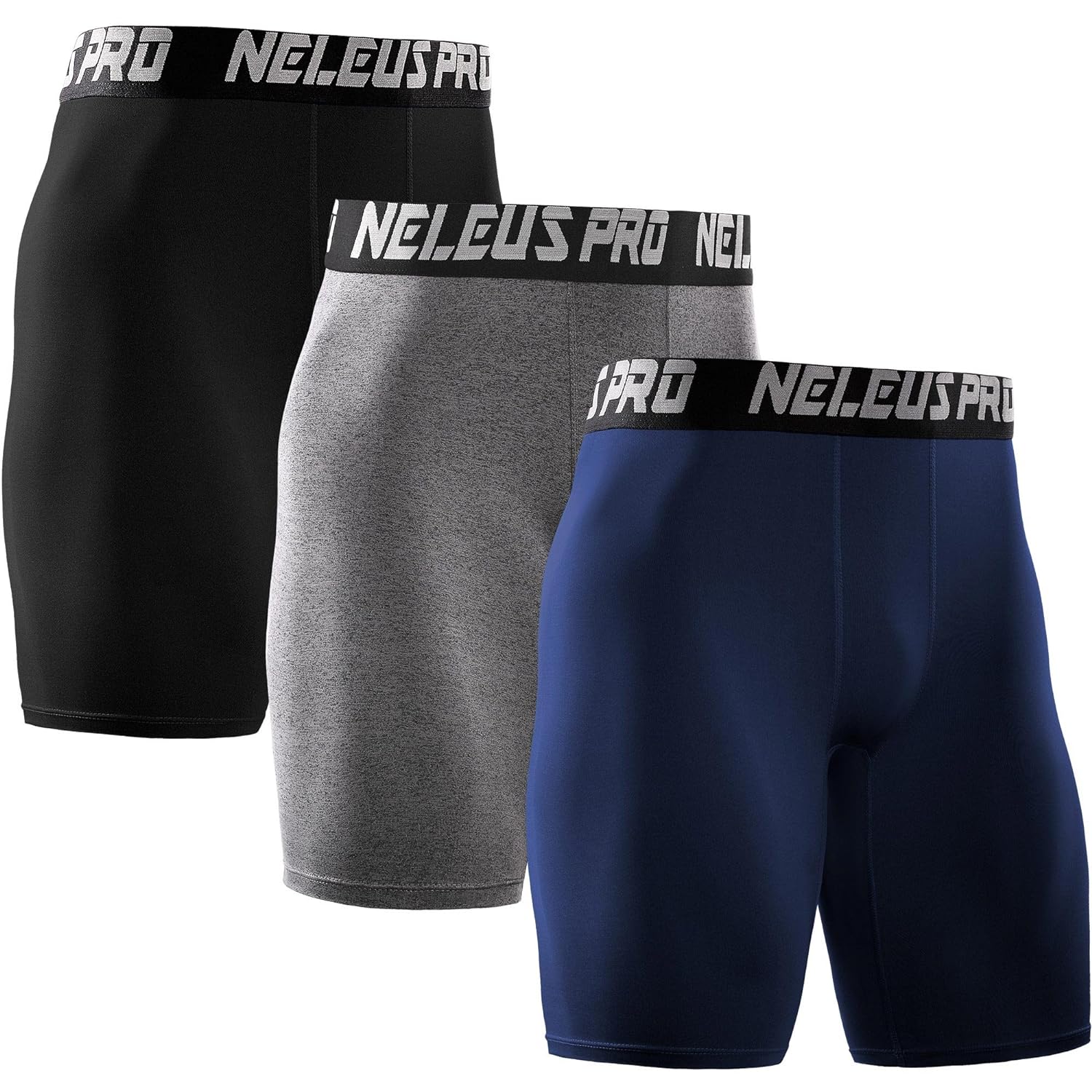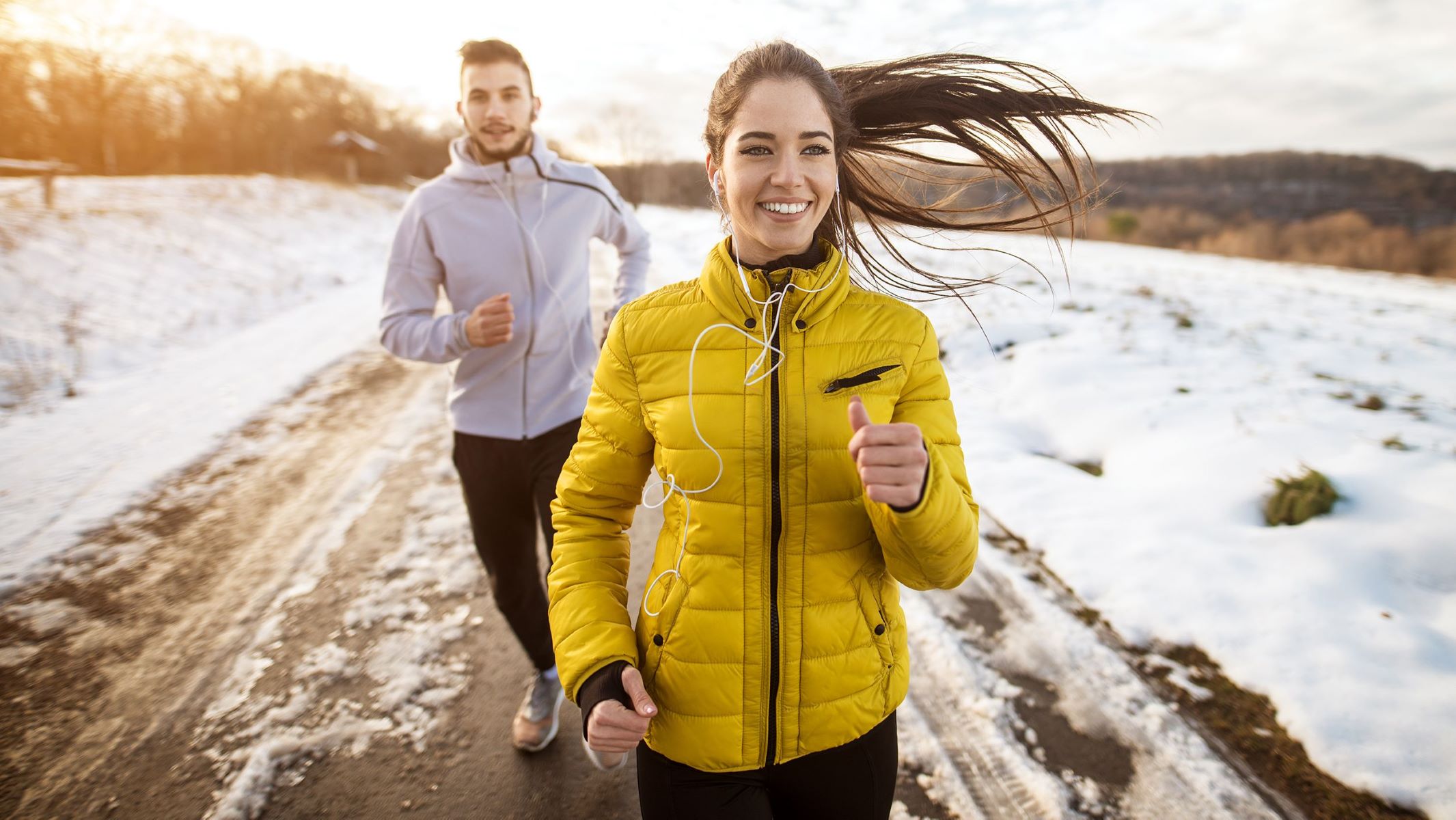

Types
What To Wear Over Workout Clothes In Winter
Published: August 12, 2023
Discover the must-have types of clothing to layer over your workout clothes in winter. Stay warm and stylish while exercising outdoors!
Introduction
As the winter season sets in and temperatures drop, it can be challenging to stay motivated and continue with outdoor workouts. However, with the right gear and clothing, you can still enjoy your exercise routines even in the coldest weather. One essential aspect of your winter workout attire is layering, which helps to keep you warm and comfortable throughout your exercise session.
Layering is a technique that involves wearing multiple garments to trap warmth and regulate your body temperature. It is particularly important during winter workouts when the temperature fluctuations can be significant. By layering your clothing, you can easily add or remove layers depending on your body’s heating and cooling needs.
In this article, we will explore the different types of outerwear that are ideal for winter workouts. From insulated jackets and fleece pullovers to vests and hoodies, we will discuss the various options available to keep you warm and protected during outdoor activities. We will also provide tips and guidelines for choosing the right outerwear based on your specific needs and preferences.
Whether you enjoy running, hiking, cycling, or any other outdoor exercise, proper layering can make a world of difference in your comfort level and performance. So, let’s delve into the world of winter workout outerwear and discover the best options to keep you cozy and motivated throughout the season.
Importance of Layering in Winter Workouts
When it comes to winter workouts, layering your clothing is key to staying comfortable and protected from the elements. But what exactly makes layering so important? Let’s take a closer look:
1. Temperature Regulation: During winter workouts, the temperature can vary significantly, especially as your body heats up from physical activity. Layering allows you to adjust your clothing based on your body’s needs. As you warm up, you can remove a layer to prevent overheating. Similarly, if the temperature drops, you can easily add a layer to keep yourself warm.
2. Moisture Management: Perspiration is inevitable during workouts, even in cold weather. Layering helps manage moisture by allowing the innermost layer of clothing to wick away sweat from your body, keeping you dry and preventing the chilling effect of wet clothing on your skin.
3. Insulation: Layering creates a thermal barrier between your body and the cold outdoor air. Each layer traps a thin layer of air, which acts as insulation to keep you warm. This helps regulate your body temperature and prevents the loss of heat, keeping you comfortable throughout your workout.
4. Versatility: Layering provides flexibility in adapting to changing weather conditions. If you start your workout on a cold morning but the temperature rises as the day progresses, you can easily remove a layer to prevent overheating. This adaptability allows you to enjoy your workout without any discomfort.
5. Protection from Wind and Snow: Outer layers in your winter workout attire can act as a shield against wind and snow. Windbreakers and insulated jackets with water-resistant or waterproof properties can provide protection against the elements, keeping you warm and dry.
6. Injury Prevention: Exercising in cold weather without proper layering can increase the risk of hypothermia, frostbite, and muscle strains. Layering helps maintain a stable body temperature and prevents sudden drops in core temperature.
Now that we understand the importance of layering in winter workouts, let’s explore the various types of outerwear that are suitable for keeping you warm and comfortable during your outdoor exercise sessions.
Types of Outerwear for Winter Workouts
When it comes to choosing the right outerwear for your winter workouts, there are several options to consider. Each type of outerwear offers its own unique features and benefits. Here are some popular choices:
- Insulated Jackets: Insulated jackets are perfect for cold and windy conditions. They are designed to provide warmth by trapping body heat. Look for jackets with synthetic insulation or down insulation, as they offer excellent insulation properties even in wet conditions. Insulated jackets often come with features like adjustable hoods, pockets, and adjustable cuffs to provide you with added protection and comfort.
- Fleece Pullovers: Fleece pullovers are a versatile option for layering in winter workouts. Made from synthetic materials, fleece pullovers provide warmth, breathability, and moisture-wicking properties. They are lightweight and easy to pack, making them a convenient choice for outdoor activities. Fleece pullovers are available in various thicknesses, allowing you to choose the right level of insulation based on the temperature and intensity of your workout.
- Vest: Vests are a popular choice for those who prefer to have their arms free while keeping their core warm. They provide insulation to your core and allow unrestricted movement. Vests are typically made from synthetic materials or down insulation and offer great versatility. They can be worn over a long-sleeved base layer or under a jacket for added warmth during colder workouts.
- Hoodies: Hoodies are a comfortable and casual option for winter workouts. They provide warmth and comfort, and many come with features such as adjustable hoods and pockets. Look for hoodies made from moisture-wicking materials that can help manage perspiration during your workout. Hoodies are great for layering over a base layer or under a jacket to add an extra layer of insulation.
- Windbreakers: Windbreakers are essential for outdoor workouts in windy conditions. They are designed to block wind, keeping you protected and warm. Look for windbreakers made from lightweight and breathable materials to ensure comfort during physical activity. Many windbreakers also have water-resistant properties, which can come in handy if you encounter light rain or snow showers during your workout.
- Sweaters: Sweaters are a classic choice for winter workouts. Made from wool or synthetic materials, sweaters provide excellent insulation and are naturally moisture-wicking. They can be layered over a base layer or worn as a mid-layer under a jacket for added warmth. Sweaters come in a variety of styles, including crew neck and zip-up options, allowing you to choose the style that suits your preference.
With these various options, you can mix and match different outerwear pieces to create the perfect combination for your winter workouts. However, it’s important to keep in mind the specific weather conditions, your activity level, and personal preferences when selecting the right outerwear.
Now that we have explored the different types of outerwear available for winter workouts, let’s move on to some tips for choosing the right outerwear to ensure maximum comfort and performance.
Insulated Jackets
Insulated jackets are a staple in winter workout attire. They are designed to provide exceptional warmth and protection against cold and windy conditions. Here are some key features and benefits of insulated jackets:
Insulation: Insulated jackets are filled with insulation materials like synthetic fibers or down feathers. These materials create air pockets that trap body heat, keeping you warm even in freezing temperatures.
Water-Resistant or Waterproof: Many insulated jackets come with water-resistant or waterproof properties, making them ideal for snowy or rainy conditions. The outer shell of the jacket repels moisture, keeping you dry and comfortable during your workout.
Breathability: Look for insulated jackets with breathable fabrics or ventilation features. This will allow excess heat and moisture to escape, preventing overheating and sweat buildup during intense workouts.
Adjustable Features: Insulated jackets often come with adjustable features such as hoods, cuffs, and hemlines. These features enable you to customize the fit and seal out cold air, ensuring maximum warmth and protection.
Durability: Insulated jackets are designed to withstand tough outdoor conditions. Look for jackets with reinforced stitching, high-quality zippers, and durable materials to ensure long-lasting performance.
Weight and Packability: While providing insulation, insulated jackets are lightweight and easy to pack. This makes them convenient for carrying during outdoor activities or for layering with other clothing pieces.
Versatility: Insulated jackets are versatile and can be used for various winter activities such as running, hiking, skiing, and more. They provide excellent warmth without restricting movement, allowing you to perform at your best.
When choosing an insulated jacket, consider the temperature range and the type of activities you’ll be engaging in. For extremely cold conditions, opt for jackets with higher fill power or thicker insulation. However, if you anticipate intense physical activity, you may want to choose a more lightweight and breathable jacket to prevent overheating.
Additionally, consider factors such as jacket length, hood style, and available pockets. A longer jacket can provide more coverage and protection, while a detachable or adjustable hood can offer versatility in different weather conditions. Pockets are always a useful feature for storing essential items like keys, phones, or gloves.
Finally, when trying on insulated jackets, ensure proper fit and range of movement. You should be able to comfortably wear multiple layers underneath without feeling constricted, and the jacket should allow you to move freely during your workout.
With the right insulated jacket, you can stay warm, protected, and comfortable during your winter workouts, enabling you to fully enjoy the benefits of outdoor exercise.
Fleece Pullovers
Fleece pullovers are a popular choice for winter workouts due to their versatility and comfort. These garments are made from synthetic materials that provide warmth, breathability, and moisture-wicking properties. Here are some key features and benefits of fleece pullovers:
Warmth: Fleece fabric is known for its excellent insulation properties. The synthetic fibers in fleece pullovers trap air and retain body heat, keeping you warm in cold weather conditions.
Breathability: Fleece pullovers are highly breathable, allowing excess heat and moisture to escape. This prevents overheating during intense workouts and helps to regulate your body temperature.
Moisture-Wicking: Fleece material has inherent moisture-wicking properties that draw sweat away from your body. This keeps you dry and comfortable, minimizing the risk of chills or discomfort caused by wet clothing.
Lightweight and Packable: Fleece pullovers are lightweight and easy to pack, making them a convenient choice for outdoor activities. They take up minimal space in your backpack and can be easily layered with other clothing items.
Soft and Comfortable: The texture of fleece fabric is soft and comfortable against the skin, providing a cozy and enjoyable wearing experience. The smooth surface also allows for easy layering, reducing friction and maximizing comfort.
Easy Care and Quick Drying: Fleece pullovers are low-maintenance and can be machine washed and dried. They dry quickly, allowing you to reuse them for your next workout without much delay.
Versatility: Fleece pullovers can be worn as a mid-layer or outer layer, depending on the weather conditions. They can be paired with a base layer for added insulation or worn on their own during milder winter days.
When choosing a fleece pullover, consider the weight and thickness of the fabric. Thicker fleece provides more insulation and warmth, making it suitable for colder temperatures. However, if your workout involves high-intensity activities or you anticipate warmer conditions, a lighter weight fleece pullover may be more appropriate to prevent overheating.
Look for features such as a quarter or half-zip design, which allows for easy ventilation and temperature control. Additionally, consider whether you prefer a pullover with a stand-up collar for added protection against the cold or a crew neck style for a more casual and comfortable fit.
Fleece pullovers come in a variety of colors and designs, allowing you to express your personal style while staying warm and cozy. Whether you’re going for a run, hitting the trails, or engaging in any other outdoor activity, a fleece pullover will provide the comfort and insulation you need to enjoy your winter workout to the fullest.
Vest
A vest is a versatile and practical outerwear option for winter workouts. It offers core warmth while allowing for unrestricted movement of the arms. Here are some key features and benefits of wearing a vest during your outdoor exercise sessions:
Core Insulation: Vests are designed to provide insulation to your core, which is the central part of your body. By keeping your core warm, a vest helps regulate body temperature and prevents heat loss in colder conditions.
Freedom of Movement: Vests are sleeveless, allowing for full range of motion in the arms. This makes them suitable for activities that require a lot of arm movement, such as hiking, climbing, or cycling.
Layering Capability: Vests are versatile layering pieces. They can be worn over a long-sleeved base layer for added warmth or under a jacket for extra insulation. This versatility allows you to adapt to changing weather conditions or adjust your level of warmth as needed.
Lightweight and Packable: Vests are typically lightweight and easy to pack. They take up minimal space in your backpack or gym bag, making them convenient for carrying during your workout or for layering on the go.
Core Ventilation: Some vests come with ventilation features like mesh panels or back vents. These features promote airflow around the core, helping to regulate body temperature and prevent overheating during intense physical activity.
Added Visibility: Many vests have reflective elements or bright colors, which enhance visibility in low-light conditions. This is especially important if you’re exercising during early morning or evening hours when visibility can be reduced.
Stylish and Fashionable: Vests come in a variety of styles and designs, allowing you to express your personal style while staying warm. Whether you prefer a puffer-style vest, a sleek and form-fitting design, or a quilted pattern, there’s a vest out there to match your preferences.
When choosing a vest, consider factors such as insulation, fit, and additional features. Look for vests with lightweight insulation materials, such as synthetic fibers or down, for optimal warmth. Ensure that the vest fits comfortably without being too tight or restrictive, allowing you to move freely during your workout.
Consider additional features like pockets, adjustable hems, or a high collar for added functionality and comfort. Pockets can come in handy for storing small essentials like keys, phone, or gloves. Adjustable hems allow you to customize the fit and seal out cold air, while a high collar offers extra protection against wind and cold temperatures.
Whether you’re going for a brisk walk, engaging in outdoor yoga, or participating in any other winter workout, a vest can be a practical and stylish choice to keep your core warm while maintaining freedom of movement. It’s a versatile piece of outerwear that will enhance your comfort and performance during outdoor exercise sessions.
Hoodies
Hoodies are a comfortable and popular choice for winter workouts. They provide both warmth and style, making them a versatile option for outdoor activities. Here are some key features and benefits of wearing a hoodie during your winter workouts:
Warmth and Insulation: Hoodies are typically made from thick, cozy materials that provide insulation and warmth in chilly weather conditions. They are perfect for layering over a base layer or wearing on their own during milder winter days.
Comfortable Fit: Hoodies are known for their relaxed and comfortable fit. They allow for unrestricted movement and provide ample room to wear additional layers underneath, ensuring a comfortable workout experience.
Hood for Extra Protection: The hood on a hoodie provides an additional layer of protection against the cold and wind. It helps to keep your head and neck warm and shields you from rain or snowfall during your outdoor workouts.
Adjustable Features: Many hoodies come with adjustable features like drawstrings on the hood and elastic cuffs. These features allow you to customize the fit and seal out cold air, ensuring maximum warmth and protection.
Moisture-Wicking Properties: Look for hoodies made from moisture-wicking fabrics that help to keep sweat away from your skin. This helps to prevent discomfort and chilling caused by damp clothing during your workout.
Convenience and Versatility: Hoodies are easy to throw on and take off, making them a convenient choice for outdoor activities. They can be worn for various winter workouts, such as running, hiking, or simply heading to the gym.
Style: Hoodies come in a wide range of styles, designs, and colors, allowing you to showcase your personal style while staying warm. Whether you prefer a pullover or zip-up style, a plain design or a graphic print, you can find a hoodie that suits your taste.
When choosing a hoodie for your winter workouts, consider the material, thickness, and overall quality. Look for hoodies made from high-quality fabrics that offer both warmth and durability. Additionally, consider whether you prefer a pullover style or a zip-up style that allows for easy on and off.
It’s also important to find the right fit. Avoid hoodies that are too tight or restrictive, as they can limit your movement during workouts. Opt for a size that allows for comfortable layering and provides the freedom to move your arms without feeling constricted.
Whether you’re heading out for an early morning jog, going for a hike, or simply running errands in the cold weather, a hoodie is a versatile and cozy choice. It will keep you warm and comfortable while adding a touch of style to your winter workout attire.
Windbreakers
Windbreakers are a must-have outerwear choice for winter workouts, particularly in windy weather conditions. These lightweight and versatile jackets are designed to protect you from wind and provide an extra layer of warmth. Here are some key features and benefits of wearing a windbreaker during your outdoor exercise sessions:
Wind Resistance: Windbreakers are specifically designed to block wind and prevent it from penetrating through the fabric. This helps to maintain your body heat and keep you warm, even in gusty conditions.
Water Resistance: Many windbreakers also have water-resistant properties, making them suitable for light rain or snow showers. The fabric repels moisture, keeping you dry and comfortable during your workout.
Breathability: Windbreakers are designed to strike a balance between wind resistance and breathability. They offer ventilation features or breathable fabrics to allow heat and moisture to escape, preventing overheating during intense workouts.
Lightweight and Packable: Windbreakers are typically lightweight and easy to pack, making them convenient for carrying during your workout or for layering on the go. They take up minimal space in your backpack and can be easily tied around your waist if you no longer need to wear them.
Visibility: Many windbreakers come in bright colors or have reflective elements, enhancing your visibility during low-light conditions. This is particularly important if you’re exercising during early mornings or evenings when visibility may be reduced.
Versatility: Windbreakers are versatile outerwear options that can be worn for a wide range of winter activities. They can be layered over a base or mid-layer, or worn on their own during milder weather. They are suitable for activities such as running, cycling, hiking, or simply going for a walk.
Durability: Windbreakers are designed to withstand outdoor conditions and frequent use. Look for windbreakers with reinforced stitching, high-quality zippers, and durable materials to ensure longevity and performance.
When choosing a windbreaker, consider the fit and features that suit your needs. Look for a proper fit that allows for comfortable movement and layering underneath. Consider features such as adjustable hoods, cuffs, and hemlines for a customizable and snug fit to keep out the wind.
Additionally, pay attention to the type of fabric used in the windbreaker. Choose a windbreaker that balances wind resistance, breathability, and water resistance based on your geographical location and the weather conditions you anticipate during your workouts.
A windbreaker is an essential piece of outerwear that offers protection, comfort, and versatility during winter workouts. By effectively blocking wind and providing an extra layer of insulation, a windbreaker will enable you to enjoy your outdoor activities without feeling the cold bite of the wind.
Sweater
Sweaters are classic and cozy options for winter workouts. Made from wool or synthetic materials, sweaters provide excellent insulation and warmth in cold weather conditions. Here are some key features and benefits of wearing a sweater during your outdoor exercise sessions:
Insulation: Sweaters are designed to provide excellent insulation, keeping you warm even in frigid temperatures. The natural properties of wool or the synthetic fibers in sweaters trap air, creating a layer of warmth close to your body.
Moisture-Wicking: Many sweaters are made from moisture-wicking materials that draw sweat away from your body. This helps to keep you dry and comfortable during your workout, preventing the discomfort of damp clothing against your skin.
Breathability: Sweaters made from natural fibers like wool provide good breathability, allowing excess heat and moisture to escape. This helps regulate your body temperature during intense workouts, preventing overheating.
Durability: Sweaters are known for their durability, making them a long-lasting investment in your winter workout wardrobe. Wool sweaters, in particular, are resistant to wear and tear, retain their shape well, and can withstand frequent use.
Softness and Comfort: Sweaters are soft and comfortable against the skin, providing a cozy and luxurious feel during your workouts. The natural fibers of wool are known for their softness, ensuring optimal comfort even during intense physical activities.
Natural Insulation and Odor Resistance: Wool sweaters have natural insulating properties, which allow them to retain warmth even when wet. Additionally, wool is naturally resistant to odors, keeping you feeling fresh even after a strenuous workout.
Stylish and Versatile: Sweaters come in various styles, patterns, and colors, allowing you to showcase your personal style while staying warm. Whether you prefer a classic crew-neck design or a more modern and trendy look, there’s a sweater out there to match your preferences.
When choosing a sweater for your winter workouts, consider the weight and thickness of the fabric. Thicker sweaters offer more insulation and are suitable for colder temperatures, while lighter options can be worn during milder weather conditions or as a mid-layer under a jacket.
Additionally, pay attention to the fit and consider whether you want a more form-fitting sweater or a looser fit for layering. Look for sweaters with features like ribbed cuffs and hems to keep out the cold air, as well as a high collar or a zip-up design for added warmth and protection.
Sweaters are a timeless and versatile choice for winter workouts. Whether you’re going for a leisurely walk in the park or engaging in more intense activities, a sweater will keep you warm, comfortable, and stylish during your outdoor exercise sessions.
Tips for Choosing the Right Outerwear
Choosing the right outerwear for your winter workouts is essential for staying comfortable, protected, and motivated. Here are some tips to help you make the best choice:
1. Consider the Temperature: Take into account the average temperature range during your workouts. If you’re exercising in extremely cold conditions, opt for thicker, insulated jackets or sweaters. For milder temperatures, lighter layers like fleece pullovers or windbreakers may be sufficient.
2. Assess the Weather Conditions: Consider the specific weather conditions you will be facing during your workouts. If it’s windy or rainy, prioritize windproof and waterproof materials such as windbreakers or jackets with water-resistant properties.
3. Prioritize Layering: Layering is key to maintaining comfort in fluctuating temperatures. Choose outerwear that allows for easy layering, such as vests or jackets with roomy fits. This way, you can add or remove layers as needed to regulate your body temperature.
4. Optimize Breathability: Look for outerwear with breathable fabrics or ventilation features. This will help prevent overheating and allow moisture to escape, keeping you dry and comfortable during your workouts.
5. Consider Durability: Outerwear for winter workouts should be durable enough to withstand frequent use and outdoor conditions. Look for reinforced stitching, high-quality zippers, and sturdy materials that can endure the demands of your activities.
6. Ensure a Comfortable Fit: The right fit is crucial for comfort and freedom of movement. Consider the layering potential and choose outerwear that allows you to comfortably wear multiple layers underneath. Make sure the fit is not too tight or restrictive, allowing for easy movement during your workouts.
7. Pay Attention to Features: Consider additional features that enhance functionality and comfort. Features like adjustable hoods, cuffs, and hems allow for customized fit and added protection against the elements. Pockets can also be useful for storing essentials like keys, phones, or gloves.
8. Reflect Your Style: Don’t forget to showcase your personal style in your outerwear choices. Look for designs, colors, and patterns that align with your preferences. Feeling good in your attire can boost your confidence and motivation during your workouts.
9. Quality over Price: Invest in high-quality outerwear that will last you multiple seasons. While it may require a higher upfront cost, durable and well-made outerwear will provide better performance and value in the long run.
10. Read Reviews and Seek Recommendations: Before purchasing, read product reviews and seek recommendations from other fitness enthusiasts or outdoor enthusiasts. Real-life experiences and feedback can provide valuable insights into the performance and durability of different outerwear options.
By considering these tips and selecting the right outerwear for your winter workouts, you can stay comfortable, protected, and focused on achieving your fitness goals. Remember to prioritize your specific needs and preferences to make the best choice for your outdoor exercise routine.
Conclusion
Choosing the right outerwear for your winter workouts is crucial for staying warm, comfortable, and protected from the elements. Layering your clothing, with options such as insulated jackets, fleece pullovers, vests, hoodies, windbreakers, and sweaters, allows you to adapt to changing weather conditions and regulate your body temperature effectively. Each type of outerwear offers its unique features and benefits, from insulation to breathability to wind and water resistance.
When selecting outerwear, consider factors such as temperature, weather conditions, layering capability, breathability, durability, fit, additional features, and personal style. By keeping these considerations in mind, you can find the perfect outerwear pieces to enhance your winter workout experience and performance.
Remember, outerwear is just one aspect of your overall winter workout attire. It’s important to layer appropriately with base layers, mid-layers, and outer layers to maximize warmth and comfort. Additionally, don’t forget to wear appropriate accessories like hats, gloves, and socks to further protect your extremities from the cold.
Investing in high-quality outerwear that aligns with your specific needs can make a significant difference in your overall enjoyment and motivation during winter workouts. It’s worth spending time researching and trying out different options to find the ones that suit you best.
So, as you embark on your winter workout adventures, equip yourself with the right outerwear to brave the elements and embrace the season. Stay warm, stay motivated, and continue to prioritize your health and well-being. With the right combination of layers, you can confidently face the cold and achieve your fitness goals all winter long.
